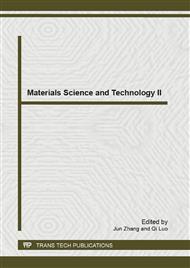p.109
p.113
p.119
p.127
p.132
p.138
p.147
p.153
p.159
Microstructural Characteristics of Multiphase Low Carbon Steel Welds with Different Ti and B Element Contents
Abstract:
In this work, a high strength, high toughness low carbon steel weld was developed by controlling the contents of B and Ti which are the minor but critical elements to the weld microstructure. The weld with the low B - Ti content exhibited the high strength close to 1 GPa and the excellent toughness over 70 J at 40 °C. The weld microstructure consisted of the multiphase which composed acicular ferrite, bainite, martensite, under welding condition. A weld with the high B - Ti content was fully martensite and exhibited the high strength over 1 GPa but the poor toughness below 15 J at 40 °C. The present results inform that, when the low carbon steel weld contains the substantial amount of various alloying elements to obtain the high strength, the B content should be low as possible so that a substantial amount of acicular ferrite is ensured by screening the hardenability improving effects from other elements. The Ti content was found to affect the size of the multi-component oxides such that the less the Ti content, the smaller the oxide size which is critical to the acicular ferrite nucleation.
Info:
Periodical:
Pages:
132-137
Citation:
Online since:
July 2013
Authors:
Price:
Сopyright:
© 2013 Trans Tech Publications Ltd. All Rights Reserved
Share:
Citation:


